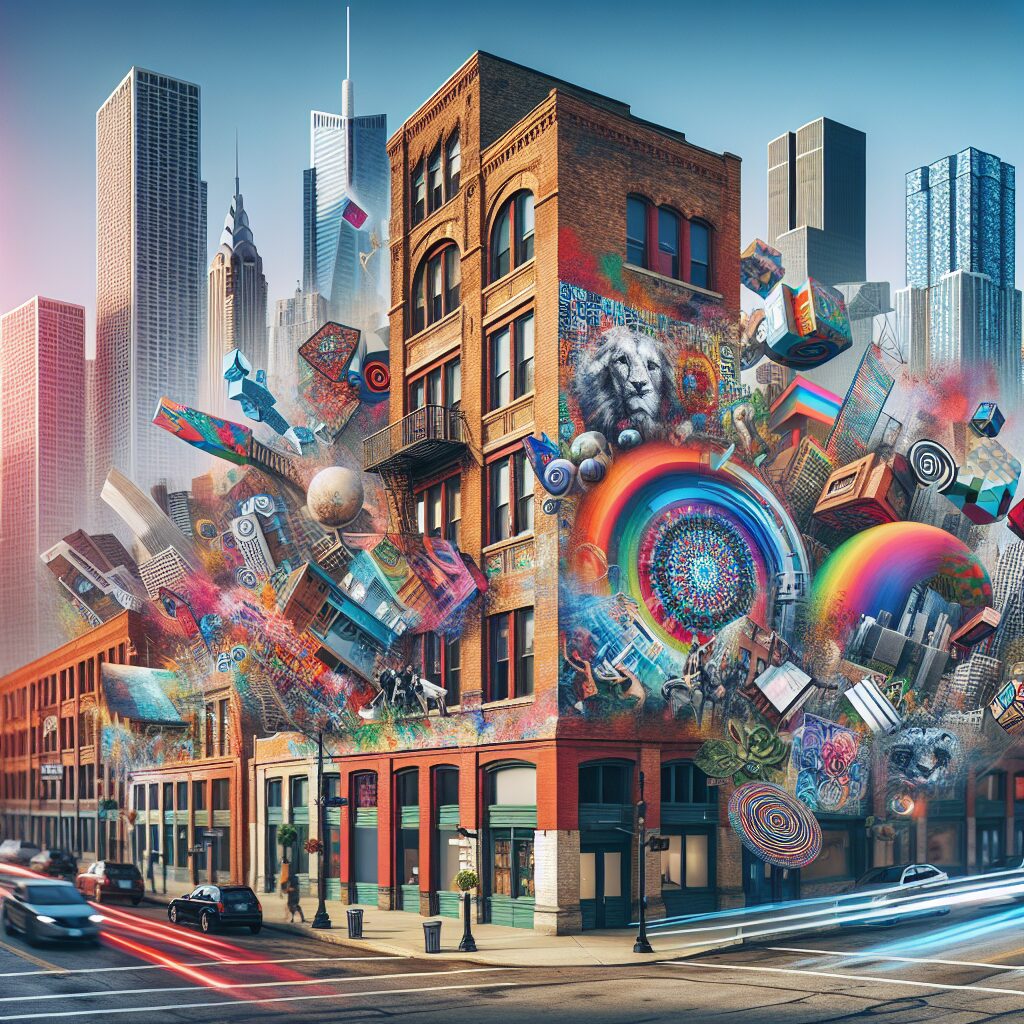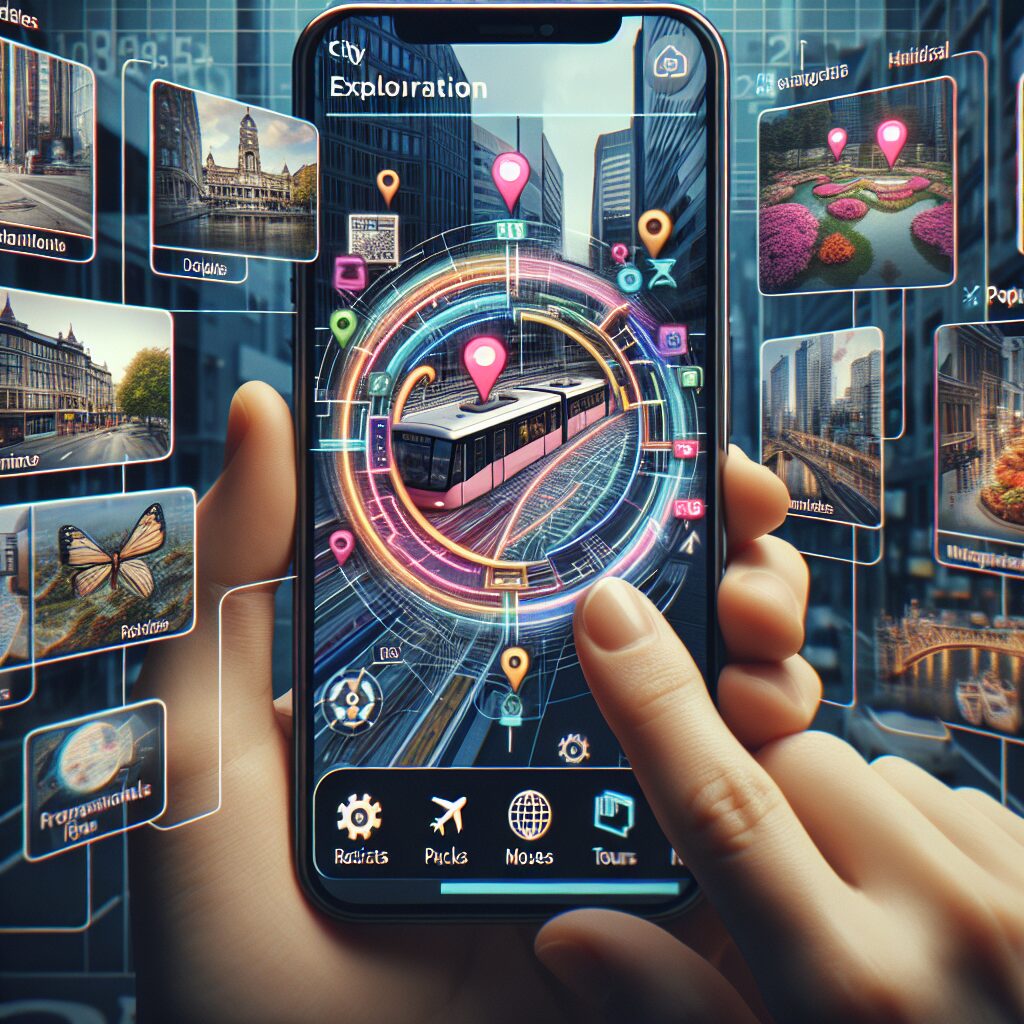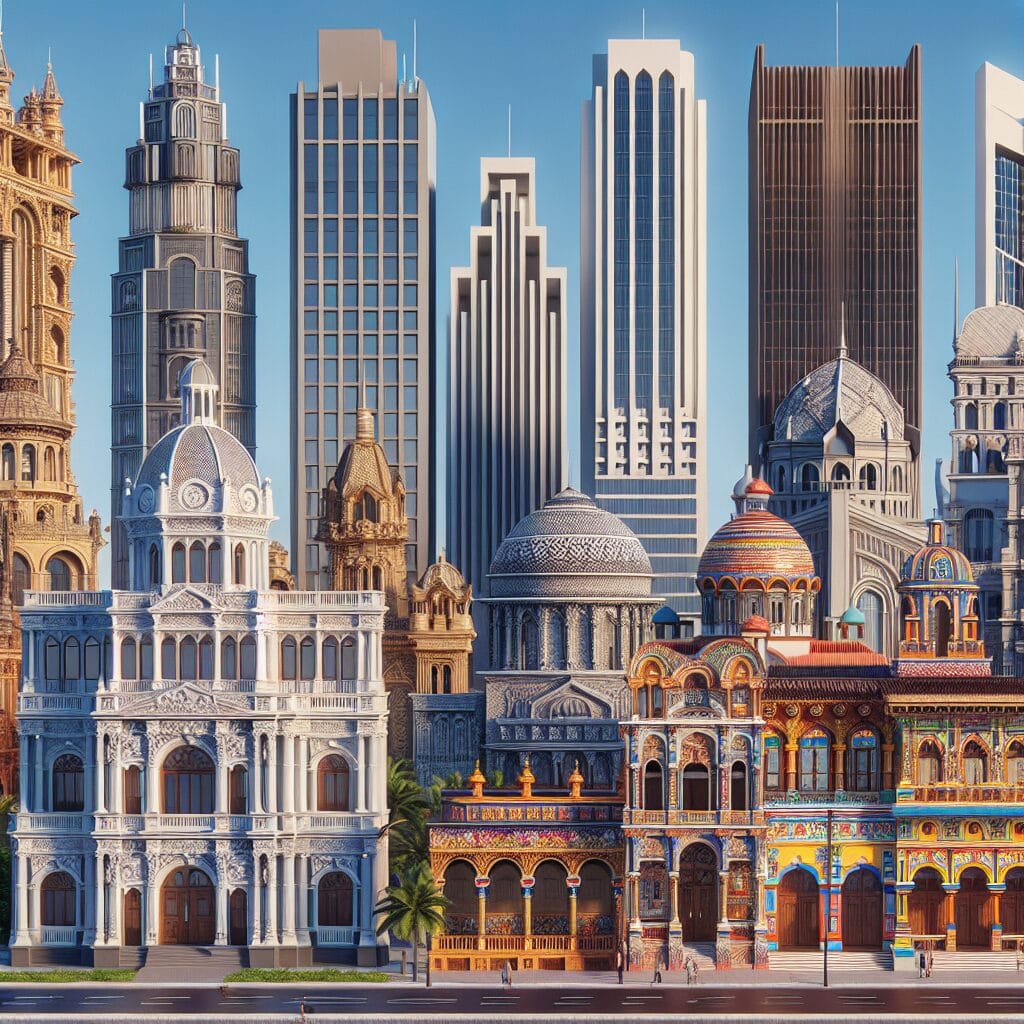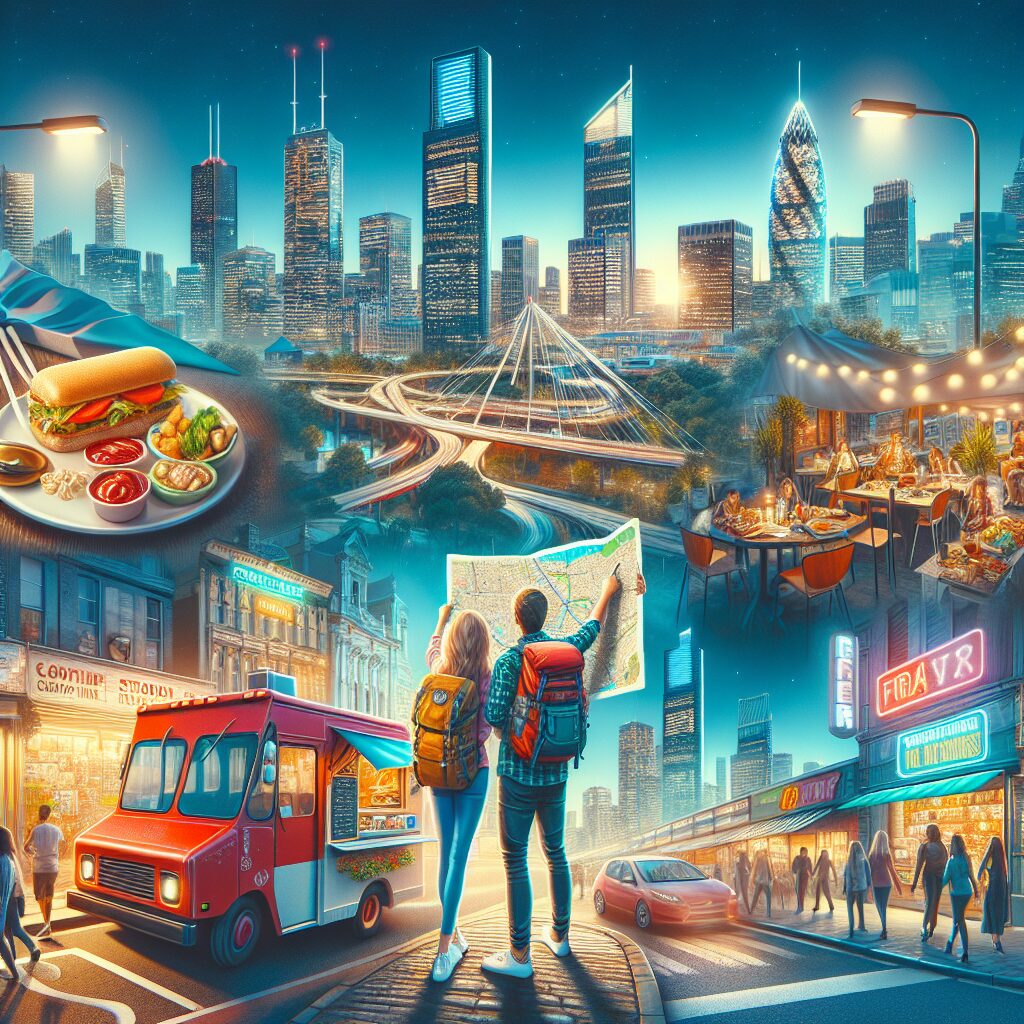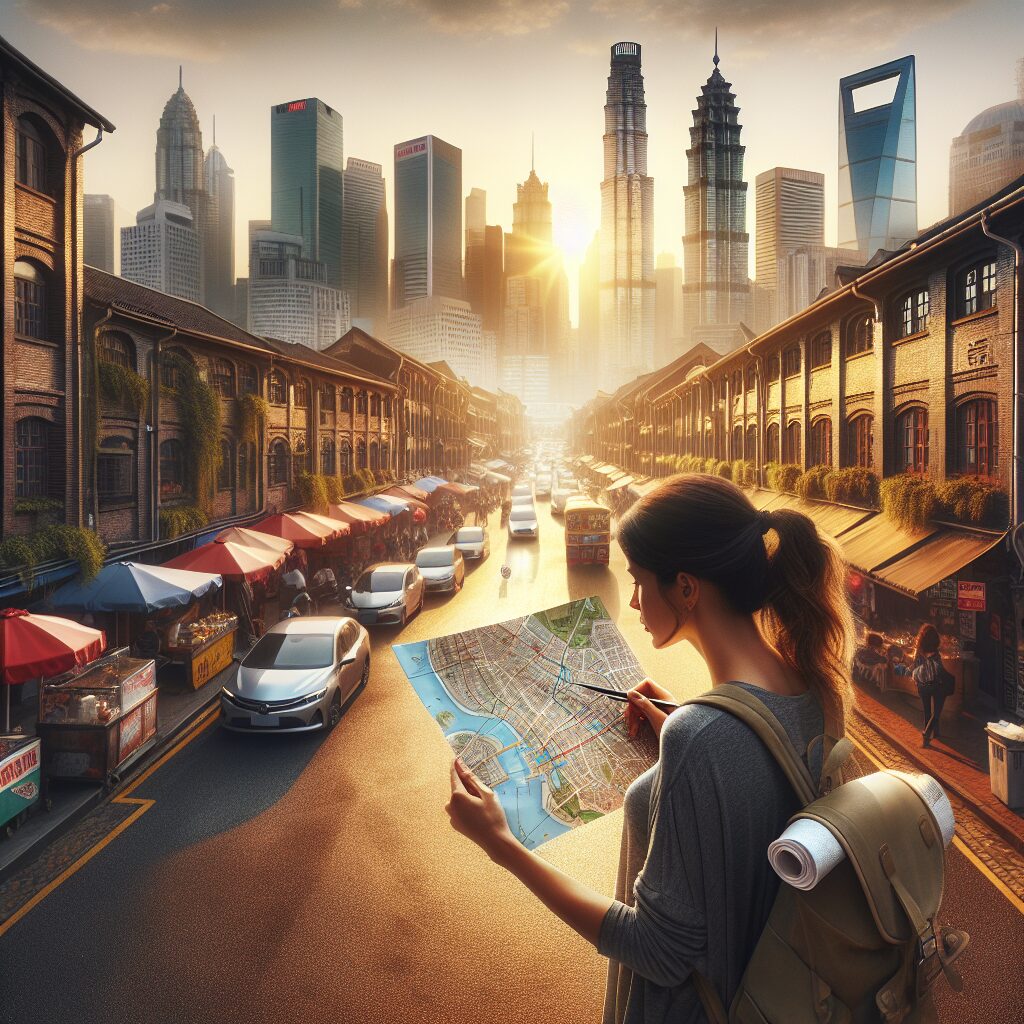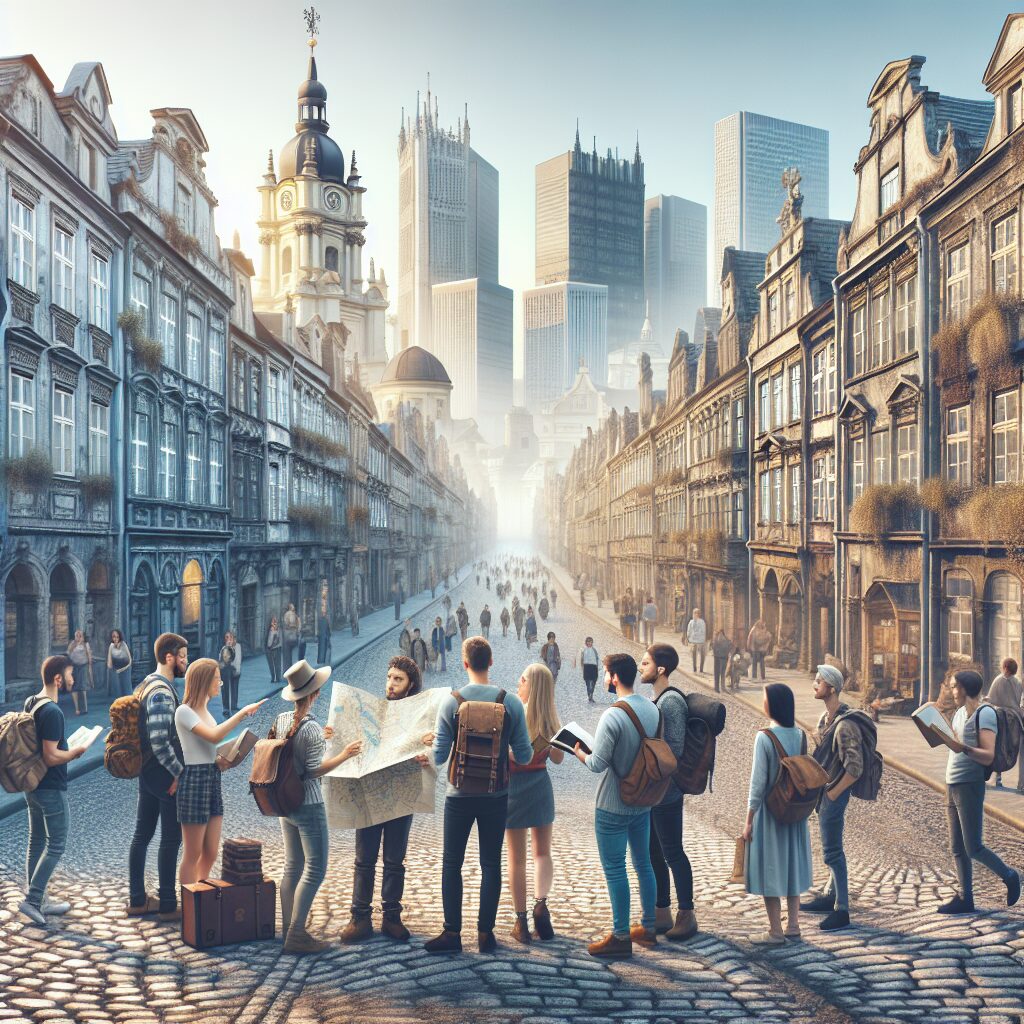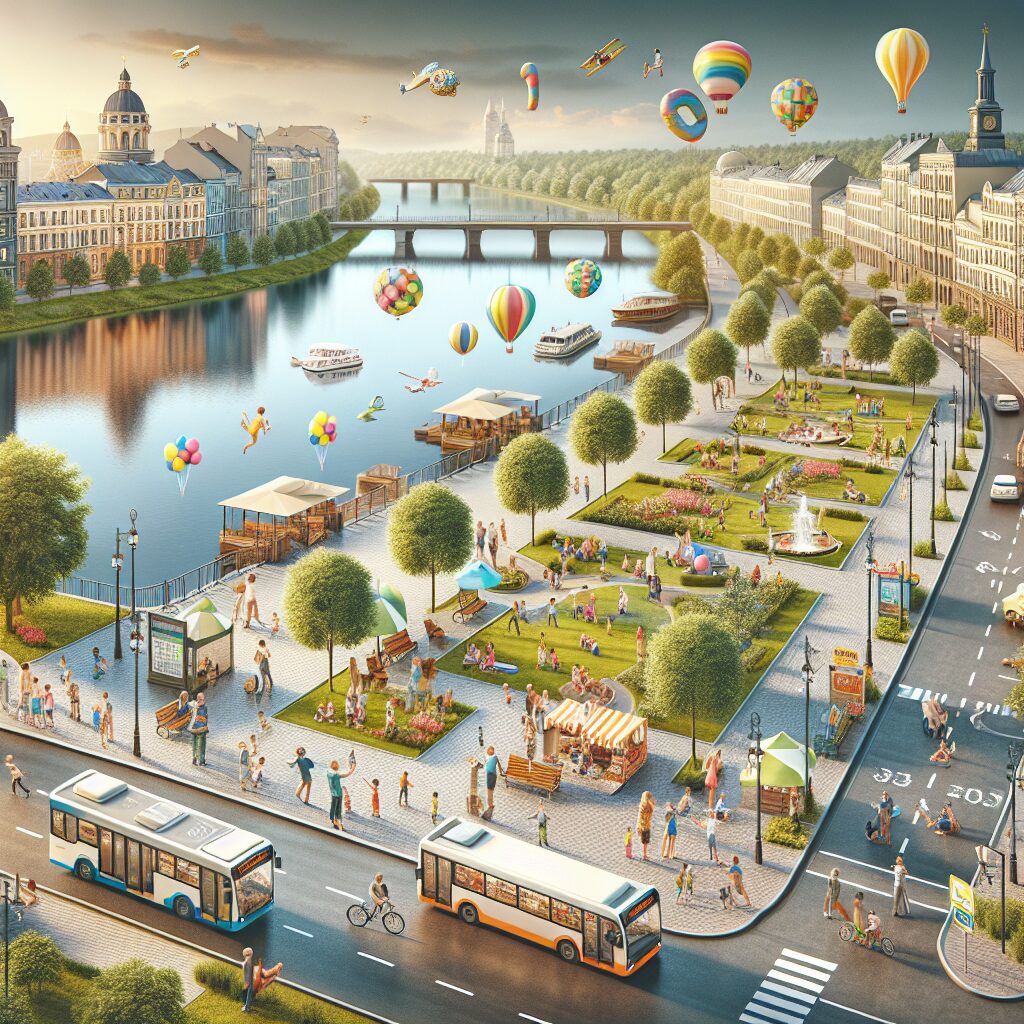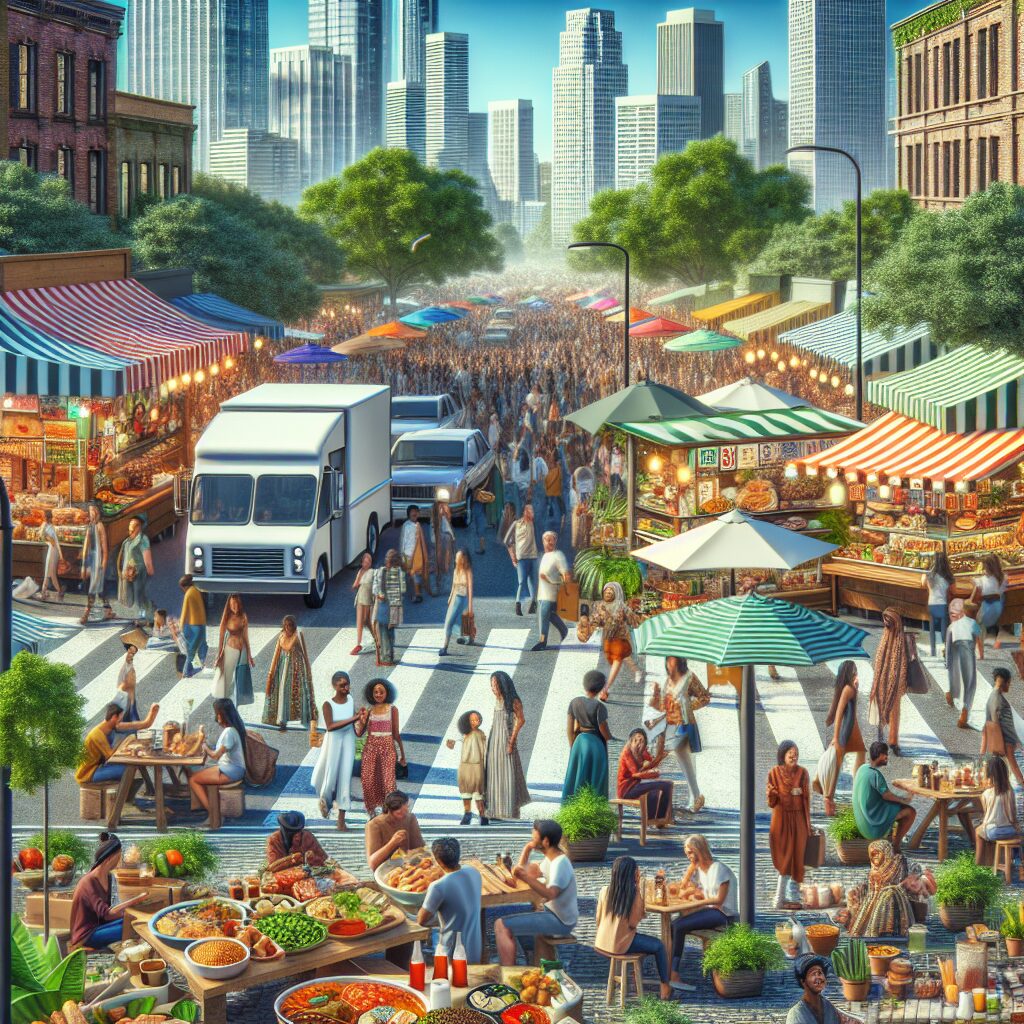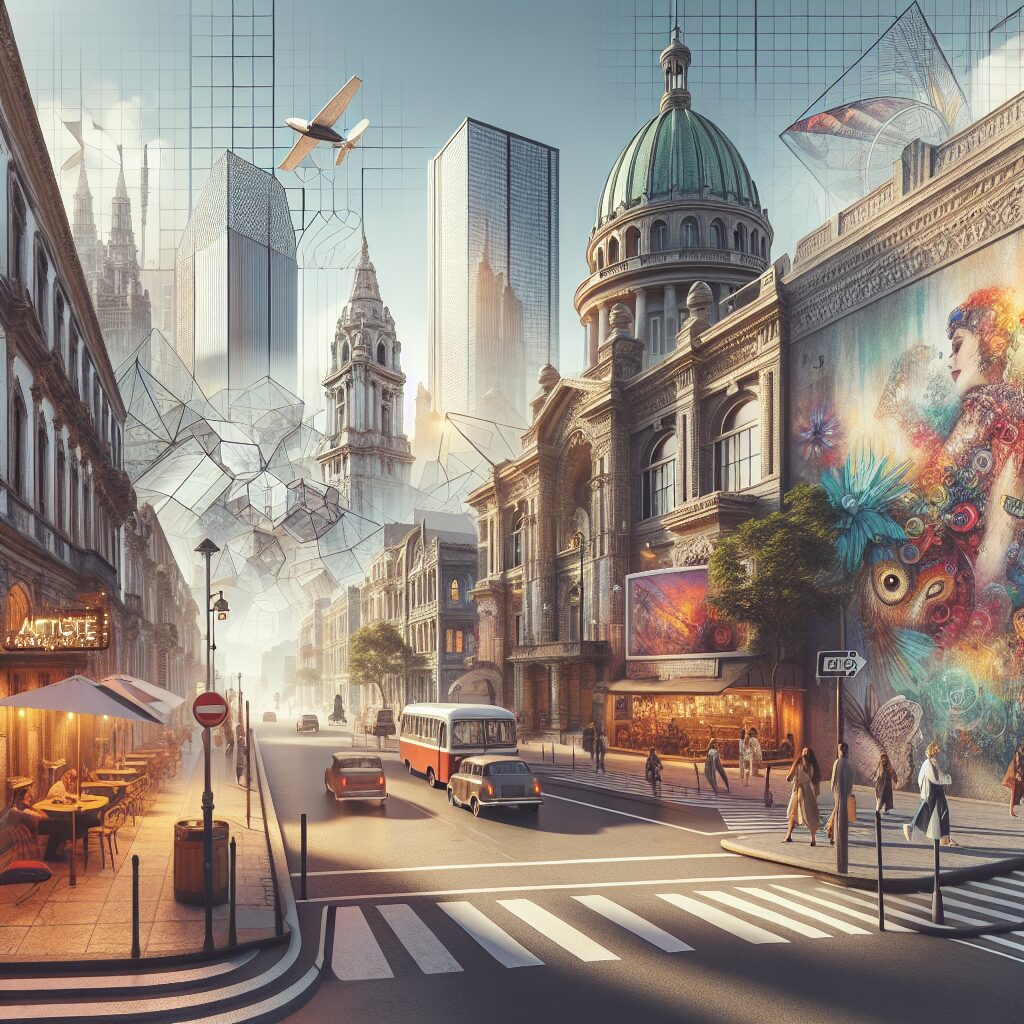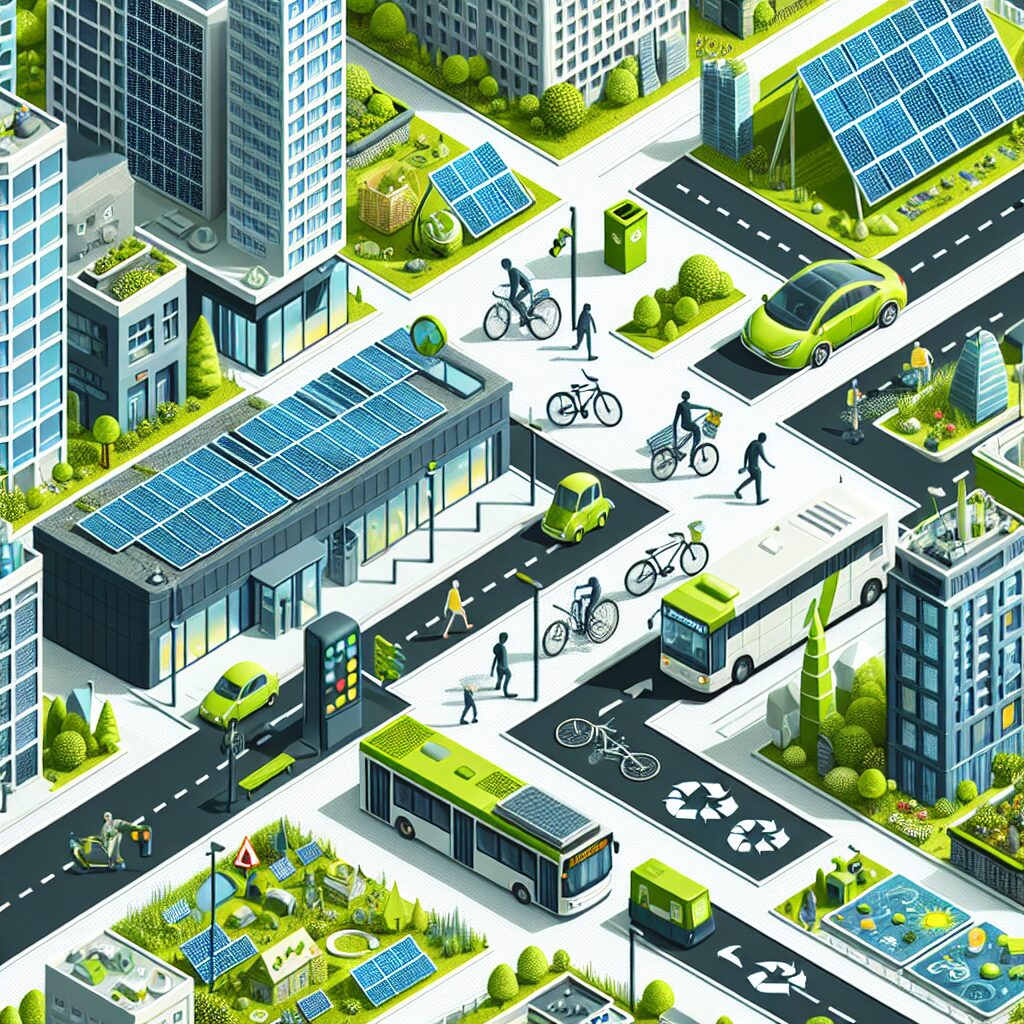Art installations have become a prominent form of creative expression in cities around the world. These captivating displays, which range from large-scale sculptures to immersive multimedia experiences, offer a unique way for artists to interact with their surroundings and engage with the public. From transforming public spaces to sparking conversations, art installations have the power to leave a lasting impact on both the urban landscape and the communities they inhabit.
One of the key features of art installations is their ability to transform ordinary spaces into extraordinary ones. By placing sculptures or installations in parks, plazas, or even on the sides of buildings, these artworks can completely change the atmosphere and dynamics of a city. They take the viewer out of their everyday routine and invite them to pause, reflect, and appreciate the beauty that surrounds them. Moreover, art installations can serve as catalysts for revitalizing neglected or forgotten areas, attracting visitors, and stimulating local economic growth. For example, the famous “LOVE” sculpture by Robert Indiana in Philadelphia has become an iconic symbol of the city and a popular tourist attraction, contributing to the vibrancy of the area.
In the next part of this article, we will explore the various ways in which art installations impact our cities and communities. These include fostering a sense of identity and pride, promoting cultural diversity, and sparking dialogue on important social issues. Through the examination of notable art installations from different cities, we will gain a deeper understanding of how these creative expressions shape our urban landscapes and contribute to the cultural fabric of our society. So, let’s dive into the fascinating world of art installations and discover the key takeaways that make them a vital part of a city’s creative expression.
Key Takeaways
1. Art installations in cities provide a platform for creative expression and bring communities together. Engaging and thought-provoking, these installations have the power to captivate viewers and enhance public spaces.
2. Public art installations can serve as statements on social and political issues, initiating conversations and sparking dialogue within communities. They provide a unique opportunity for artists to convey powerful messages to a wide audience.
3. Collaborations between artists, urban planners, and local stakeholders are crucial for the success of art installations. Such partnerships ensure that the installations are well-integrated into the urban fabric, serving as landmarks and contributing to the identity of the city.
4. The use of unconventional materials and innovative techniques in art installations allows artists to push boundaries and create immersive experiences. Utilizing technology, light, and sound can transform ordinary spaces into extraordinary sensory environments, engaging viewers on multiple levels.
5. By showcasing a diverse range of artists and artistic styles, cities can foster cultural exchange and promote inclusivity. Art installations offer an opportunity to celebrate the rich diversity of a community, creating spaces that reflect and embrace the multiplicity of voices within a city.
What are the Benefits of Art Installations for a City’s Creative Expression?
1. Enhancing Public Spaces
Art installations play a pivotal role in transforming public spaces into vibrant and engaging environments. By introducing visually captivating sculptures, murals, or interactive artworks, a city can create a unique identity that fosters a sense of pride and inspiration among its residents and visitors. These installations have the power to turn mundane locations into memorable landmarks, making the cityscape more visually appealing and memorable.
2. Encouraging Cultural Reflection
Art installations contribute greatly to a city’s cultural landscape by reflecting its history, traditions, and values. They serve as a medium through which local artists can express their creativity and communicate important messages to the community. By incorporating elements of local culture, these installations become catalysts for conversations, encouraging citizens to explore and appreciate their own heritage.
3. Promoting Tourism and Economic Growth
Art installations have proven to be major attractions for tourists, drawing them to explore different neighborhoods and contributing to the city’s economic growth. These creative expressions create photo opportunities and Instagrammable moments that encourage visitors to share their experiences on social media platforms, generating buzz and increasing the city’s visibility. As a result, local businesses, such as restaurants, cafes, and galleries, benefit from increased foot traffic, leading to economic prosperity.
4. Fostering Community Engagement
Art installations have the power to bring communities together and foster a sense of belonging. They often become gathering points for events, performances, and festivals, encouraging locals to engage in cultural activities. By creating spaces where people can connect, discuss, and appreciate art together, these installations strengthen social bonds and promote inclusivity and diversity within the city.
5. Stimulating Creativity and Inspiration
Art installations serve as catalysts for inspiration and creativity. By challenging conventional perceptions and pushing boundaries, they encourage viewers to think creatively and contemplate different perspectives. These thought-provoking pieces of art have the ability to spark imagination and encourage individuals to explore their own artistic capabilities. By immersing themselves in a city filled with creative expressions, residents may adopt a more open-minded approach to various aspects of life.
6. Boosting Public Health and Well-being
The presence of art installations in public spaces has been linked to positive effects on the mental and emotional well-being of city dwellers. Studies have shown that exposure to art can reduce stress, improve mood, and enhance overall mental health. By creating visually stimulating environments, art installations contribute to the beautification of cities and create spaces where people can relax, recharge, and find solace in the midst of urban life.
7. Igniting Conversation and Controversy
Art installations have the power to ignite conversations and spark debates, sometimes even provoking controversy. They can raise important social, political, or environmental issues, challenging societal norms and prompting dialogue among the community. By addressing thought-provoking topics, these installations encourage citizens to critically analyze and form their own opinions, leading to a more engaged and informed society.
8. Fostering Collaboration Between Artists and City Officials
The installation of art in public spaces often involves collaboration between artists and city officials. By working together, these stakeholders can create a vision for the city’s creative expression and identify suitable locations for installations. This collaboration fosters a sense of partnership and shared responsibility, ensuring that the art installations align with the city’s overall development plans and contribute to its cultural growth.
9. Sustaining Legacy and Historical Preservation
Art installations can also serve to preserve and sustain the legacy of a city. By incorporating historical references or reinterpreting iconic landmarks, these installations celebrate a city’s heritage and ensure that it continues to be remembered and appreciated by future generations. They breathe new life into historical sites and contribute to the preservation of cultural identity while embracing modern artistic expressions.
10. Green Initiatives and Sustainable Design
In recent years, many cities have embraced art installations as a way to promote sustainability and environmental consciousness. Installations made from recycled materials or those that incorporate green initiatives, such as solar panels or vertical gardens, showcase the city’s commitment to sustainable design. These eco-friendly installations not only beautify public spaces but also inspire citizens to adopt more sustainable practices in their daily lives.
Conclusion
In conclusion, art installations are invaluable assets for a city’s creative expression. They enhance public spaces, encourage cultural reflection, promote tourism and economic growth, foster community engagement, stimulate creativity and inspiration, boost public health and well-being, ignite conversation and controversy, foster collaboration between artists and city officials, sustain legacy and historical preservation, and promote green initiatives. Embracing art installations is an investment in the cultural advancement and overall well-being of a city and its residents.
Are you considering art installations for your city? Here are some tips:
1. Engage local artists and community members in the decision-making process to ensure installations reflect the city’s unique identity.
2. Seek funding through grants, sponsorships, or partnerships with local businesses or art organizations.
3. Collaborate with city planners and officials to identify suitable locations and ensure installations align with urban development plans.
4. Regularly maintain and monitor installations to ensure their longevity and safety for the community.
5. Promote public engagement by organizing events, workshops, or guided tours around the art installations.
6. Encourage resident participation through public art projects, allowing citizens to contribute to the city’s creative expression.
7. Embrace sustainability by incorporating eco-friendly materials and designs in art installations.
8. Measure the impact of art installations through surveys, social media engagement, and economic analysis to assess their effectiveness in achieving intended goals.
9. Continuously evolve and refresh art installations to keep the city’s creative expression dynamic and relevant.
10. Celebrate and recognize the artists behind these installations to show appreciation for their contributions to the city’s cultural growth.
Frequently Asked Questions about Art Installations: City’s Creative Expression
1. What are art installations?
Art installations are artistic creations or displays that are specifically designed to enhance public spaces within a city. They may include sculptures, murals, interactive exhibits, or any other form of visual art that adds a unique and creative touch to the urban environment.
2. Why are art installations important for a city?
Art installations contribute to the cultural and aesthetic development of a city by bringing art to public spaces. They help promote creativity, inspire dialogue, and create a sense of identity and pride among residents. Additionally, art installations often attract visitors and tourists, boosting the local economy and overall vibrancy of the city.
3. Who creates art installations in a city?
Art installations are typically created by professional artists or teams of artists who specialize in public art. They may be selected through open calls or commissioned by local governments, art organizations, or urban development initiatives. Sometimes, art installations are funded through public-private partnerships or grants.
4. How are art installations chosen for a city?
The process of selecting art installations varies depending on the city and its governing bodies. It often involves a committee or panel of experts who review proposals from artists and select those that align with the city’s cultural goals, architectural context, and community preferences. Public input may also be sought before making the final decision.
5. Are art installations permanent or temporary?
Art installations can be both permanent and temporary. Some installations are commissioned as permanent fixtures in the city, intended to endure for many years. Others, especially those associated with temporary exhibitions or festivals, are designed to be temporary and may be removed after a specified period.
6. How do art installations impact the community?
Art installations have several positive impacts on the community. They serve as conversation starters, fostering dialogue and engagement among residents. They can also create a sense of pride and identity, transforming public spaces into vibrant showcases of local culture. Additionally, art installations contribute to tourism, enhance the economy, and may even help decrease crime rates in certain areas.
7. Can anyone interact with art installations?
Most art installations are designed to be interactive and encourage public participation. While some installations may have specific rules or guidelines for interaction, the majority are meant to be enjoyed and experienced by all members of the community. Interacting with art installations often adds an element of playfulness and personal connection to the overall experience.
8. How can art installations be funded?
Art installations can be funded through various means. In some cases, cities allocate budgets specifically for public art initiatives. Other funding sources include grants from arts foundations, corporate sponsorships, donations from individuals or organizations, and crowdfunding campaigns. Public-private partnerships have also become a popular strategy to secure funding for larger-scale art installations.
9. What are the challenges faced in creating art installations?
Creating art installations can come with challenges such as securing funding, obtaining necessary permits and permissions, addressing public concerns or opposition, and ensuring the longevity and maintenance of the installations. Additionally, artists must consider the environmental impact of their projects and ensure they comply with any regulations or guidelines.
10. Can art installations be controversial?
Yes, art installations can sometimes be controversial. Art, by its nature, can evoke different emotions and opinions. Certain installations may spark debates or disagreements among communities, particularly if they touch on sensitive or polarizing subjects. However, these controversies can also lead to important conversations and reflections on societal issues.
Final Thoughts on Art Installations: City’s Creative Expression
Art installations play a vital role in transforming cities into vibrant and culturally rich spaces. By bringing art out of traditional gallery settings and into public areas, they bridge the gap between artists and the general public. These installations not only beautify the urban environment but also contribute to community engagement, social cohesion, and economic growth.
Furthermore, art installations have the power to challenge conventional thinking and encourage new perspectives. They create opportunities for dialogue and reflection, fostering a more inclusive and diverse society. As cities continue to recognize the importance of art in urban planning, it is crucial to support and embrace these creative expressions that truly define the character of a city.


